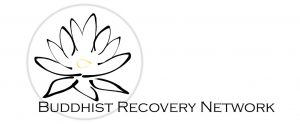by Debra Greenfield
In Buddhism we talk a lot about suffering, or “Dukkha”. It is important to realize in this practice that Dukkha is something we will all experience, simply because we are in this human form. In every moment of our existence there will be Dukkha, and there will also be joy. What makes this truth more tolerable for us in the Buddhist tradition is knowing that Dukkha, like anything else, is impermanent. If we can live our lives from the awareness of the Buddha’s teachings on impermanence, then we need not grasp onto anything, or push anything away, but just patiently wait for it to arise, abide, then pass away.
The Buddha taught there are actually three types of Dukkha or suffering. The first is Physical pain or suffering, the second is Psychological suffering, the third is Existential suffering. For the purpose of this article, I chose to talk about some behaviors that many people in this modern world struggle with, and how we can lessen the suffering associated with them.
Can meditation practice eliminate suffering?
Meditation, like life, is comprised of many moments- some of them are full of suffering, some are not. One of the things we discuss in our Buddhist Recovery meetings is how establishing a formal meditation practice can help people in recovery from addiction reduce their suffering. Most of us when finding our sobriety can struggle greatly as the Karmic consequences of our past actions catch up with us. When I first began meditating, I attempted to sit cross legged on the floor, ready with my candle and incense lit with a calm, smiling Buddha looking upon me with compassion. Prepared for an experience of the bliss of a quiet, empty mind I breathed in mindfully, relaxed my body and WHAM!, up came a memory, triggered by a sound, smell, thought or body sensation. Instantly a feeling arose that caused me to be drawn toward or push away my thought, and my body reacted accordingly. I was soon carried away on a stream of emotion that gripped my body and took my awareness away from the breath and the present moment. All of this took place in the blink of an eye, without my even being aware of it until I was carried far down the stream of suffering that ensued. This is where our real practice begins, as we learn to work with these emotions as they first arise in our meditation.
The Dukkha of “wrong perception”
One of the things our meditation experience can bring us is the ability to see the true nature of our thoughts; that they are impermanent, not who we are and (most of the time) not even true! Learning to slow down our reaction to our thoughts gives us time to stop and consider whether what we are thinking is real. Most of the time our thought streams take us into the future (where things have not happened yet) or into the past (where things have already happened), so our reactions are not based on truth because what we are experiencing is not really happening in this moment. By helping us to see the truth of our thoughts, we can eliminate the suffering of reacting to a situation that we think is happening, when in reality something else entirely is going on. When thoughts arise in our meditation or out in the world about regret of past actions, fear of an unknown future, or we suffer with the pain of this human existence, mindfulness of this present moment can help to take us out of a potentially toxic thought pattern. From there we can cultivate thoughts of loving-kindness, compassion, gratitude or joy and replace the unwholesome thoughts with those.
The Dukkha of “physical pain” – OUCH!
At a recent retreat, my teacher talked about dealing with physical pain during meditation, a subject I had personal experience with. She said that the Buddha once talked about dealing with physical pain with his Monks, explaining to them that there are two types of pain. One is the physical pain we can experience in the body, which there is no escape from. The other is the mental anguish we can create as a reaction to our aversion to that pain. The mental suffering, or Dukkha associated with physical pain is something we can lessen by cultivating our awareness of the nature of pain in the body. This can be done through insight meditation practice, where we take note of pain as it arises in the body and rather than pushing it away, dulling it with intoxicants or trying to pretend it doesn’t exist, we simply allow it to be just as it is in our body, and for as long as we can, watch it with interest and non-attachment as it arises, abides for a while and (in most instances) eventually subsides or fades away. With chronic pain, we may not be able to fully see it pass away, but can lessen much of its power over us by seeing it simply as another phenomenon that occurs in the body during meditation, and using it as the object of our meditation. When it is strong enough that we cannot bear it, we mindfully change positions (the Buddha taught meditation can be practiced either sitting, lying down, standing or walking). In retreats that require long sittings, I start my meditation in a chair, then, aware of chronic pain in my body, after 20 minutes or so I very mindfully set the intention to stand up, then do so. The key is to first watch the pain, set the intention to change position,(only slightly if possible) then do so mindfully while maintaining your meditative state. In this way, we can learn to work with pain and eliminate much of the dukkha we create with our aversion and fear of it.
The Dukkha of “busyness”
Our society cultivates lives full of constant busyness with “down time” becoming a space to be filled with some task or project. Rather than seeing space and breathing room as an essential part of our daily routine, we see it as an opportunity to work on another task, get something else done, check off something else on our “to do” list. Recently I took on a project that required that I divide time I had already delegated for another and I found myself after a week or so feeling overwhelmed. My sleep was starting to suffer, and I could feel anxiety rearing its’ ugly head. I was already well established in a routine of sitting mindfully first thing in the morning, but was noticing a quality of chaotic thinking and struggle was creeping into my sitting.
My first instinct when I become too busy or overwhelmed is to let go and do less, but all of my projects seemed equally valuable and I was frantically asking my husband “What do I let go of? What can I let go of?” The answer came to both of us as we realized we were spending our evenings watching Netflix, then I would get sucked into computer games as he eventually went off to bed. My mind was racing from sitting glued to the TV-already overstimulated after my busy day. We decided to shut off and unplug at 9pm every night for a while, and incorporate another evening sitting into our schedule with some Dharma study and discussion before bed. I’ve been sleeping like a baby, especially when I do metta meditation practice before I go to sleep. The Buddha once addressed his followers in practicing metta. ‘Monks, eleven advantages are to be expected from the release (deliverance) of heart by familiarizing oneself with thoughts of loving-kindness (metta),’ ‘He sleeps in comfort. He awakes in comfort. He sees no evil dreams. He is dear to human beings…’ and so on. { Ang. Nikaya, verse 342} I personally have experienced the quiet transformation of a mind filled with anxiety, worry, fear or anger into a focused and calm abiding state by bringing my awareness to my body’s’ reaction to a thought or feeling and watching it arise, abide and ultimately fade away. Bringing loving-kindness meditation practice into this helps heal the toxic feelings that come with my reaction to negative or scary thoughts and emotions that arise, for me particularly in the evening as I lay down to sleep.
See for yourself…
Everything I have shared with you is from my own personal experience, which is echoed to me time and again through the writings of others and in the Buddha’s teachings. I encourage you to do as the Buddha taught his disciples when he said “Ehipasiko”, which means “come and see for yourself”. All of the Buddha’s teachings were meant to be experienced by the wise, those who through meditation and study have come to see the truth of how our minds work, what it truly is to experience life in this human form and how we can use his teachings to suffer less as we go about our lives. While meditation cannot eliminate all suffering, it can help us develop the wisdom to understand experientially what suffering is, and the equanimity, or grace to “be strong like a bamboo, bright like the moon, adaptable…”
About the author
Debra Greenfield is the founder and current Secretary/Treasurer of Northwest Buddhist Recovery. She has been a student of meditation and Theravada Buddhism for seven years, using the teachings of the Four Noble Truths to bring joy and peace to her recovery from addiction. She facilitates both “Buddhist Recovery facilitator training” and “Meditation for Recovery” workshops, as well as supports Buddhist authors and teachers in bringing the Dharma of recovery to the Buddhist recovery community here in the Seattle area.


